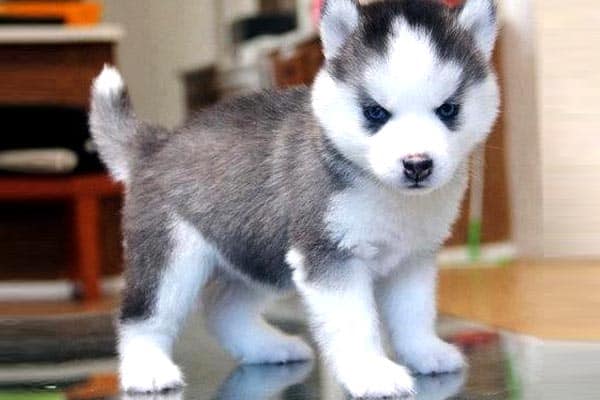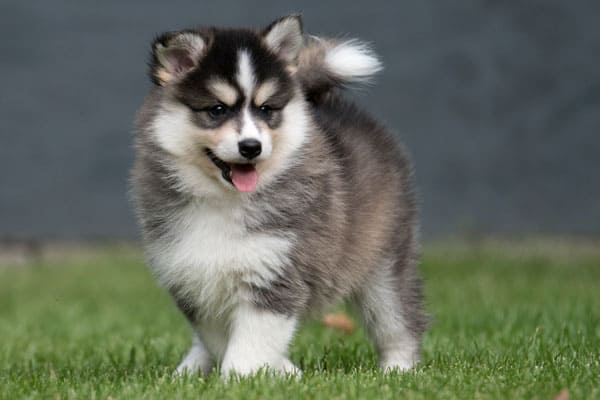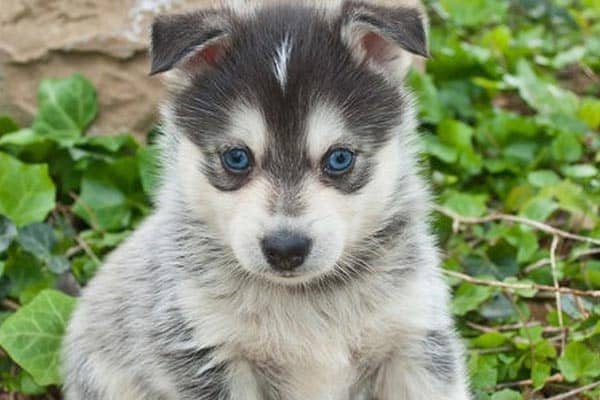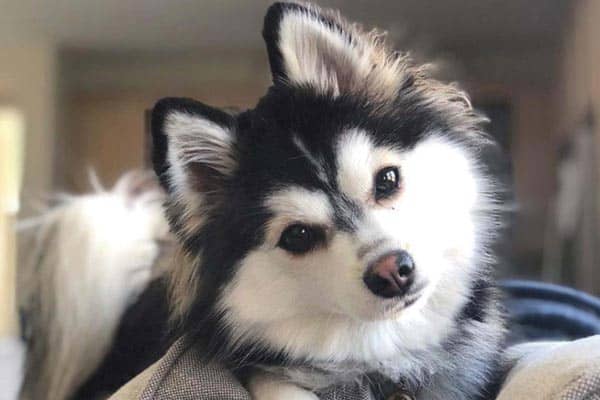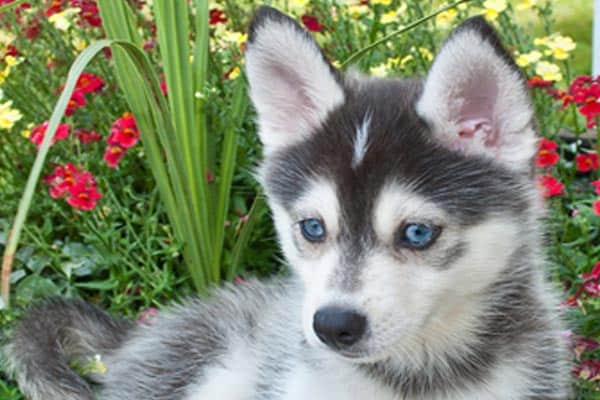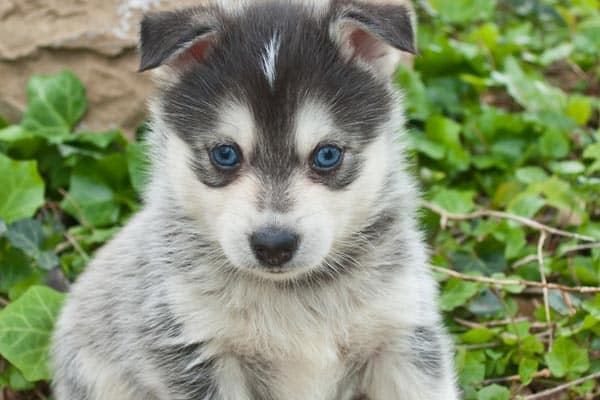Do Pomskies Get Along With Other Dogs: Find Out How to Introduce Your Pomsky to Other Family Dogs
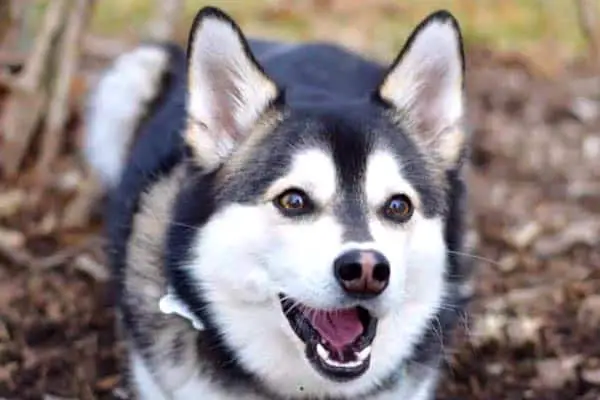
The Pomsky wasn’t even a real dog breed yet before it became a social media sensation and the must-have new hybrid dog breed.
Today, the Pomsky hybrid dog breed is barely 10 years old. These dogs are keeping breeders around the world busy because once someone sees a Pomsky, they usually want one!
But Pomskies are known to sometimes be aggressive and territorial. Will a Pomsky get along well with other dogs in your family? Let’s find out the answer to this important question now!
Do Pomskies Get Along With Other Dogs?
If you already have other pet dogs in your family, you are in luck. Pomskies do get along well with other dogs. However, it is still important to make the introductions in the right way so none of your dogs get jealous or feel threatened by a new canine arrival.
A Celebrity Dog Trainer Explains How to Introduce a New Dog to Your Family
This in-depth video from celebrity dog trainer Kaelin Munkelwitz explains in detail how to introduce a new puppy or rescue dog to one or more existing dogs in your family.
One of the most important tips Kaelin offers is to start planning for introductions before “the day” arrives and you actually bring your new dog home.
This will help you avoid the most common mistakes new multi-dog owners make: just expecting the dogs to all “work it out” on their own.
Often, just the opposite occurs and you are left trying to sort out anxious, jealous, territorial, or even aggressive canine behavior before it spirals out of control.
Pomskies Are Generally Dog-Friendly
According to VetStreet, Pomskies are generally known to be tolerant and friendly towards other family canines.
However, it is also important to be aware that dogs are typically the exception when it comes to Pomskies tolerating other family pets.
Pomskies do not typically tolerate cats very well.
And because the Pomsky has a strong prey drive (an instinct to chase small fast-moving objects), you never want to introduce a Pomsky into a home with other small vulnerable prey-type pets.
If you really want a Pomsky and you do have other small animals in your home, you will need to commit to making sure to keep these other animals separated from your Pomsky at all times.
Why Do Pomskies Typically Get Along With Other Dogs?
If Pomskies are known to be intolerant of cats and dangerous to small prey-type pet animals, then why do Pomskies generally get along well with other dogs?
This is a valid question!
The answer lies tucked away in the Pomsky dog’s ancestry.
The Pomsky is an interesting hybrid breed because both parent dogs, the Pomeranian and the Siberian Husky, are descended from the same basic canine family tree.
Let’s take a look at the history of each of the Pomsky’s parent dogs so you can understand why they do well with most other dogs.
The Pomeranian
The Pomeranian is the smallest dog in a lineage of spitz-type Arctic dogs, which also includes the Siberian Husky breed.
Pomeranians take their name from the area in northern Asia (what is now Poland and Germany) where they were first bred to assist with sledding and hauling and hunting, working in packs as sled dog teams.
While Pomeranians were never directly used in this way, being more of a guard dog and lap dog, their ancestors certainly were.
As the American Kennel Club (AKC) relates, before Queen Victoria of England fell in love with the Pomeranian and decided to become a breeder, Pomeranians were actually quite a bit larger than they are now. Most weighed between 20 and 30 pounds.
The Queen bred her Pomeranians down until they were the three to seven-pound toy-sized dogs that they are today.
But you can still see lots of evidence of the spitz line in the Pomeranian, especially when it comes to that dense, double-layer, long hair coat that dogs living in very cold climates need to survive.
The Pomeranian also has the same intense desire to run and chase as the larger spitz dogs do. They just can’t go as far on such short legs.
The Siberian Husky
The Siberian Husky is also of spitz dog lineage. The American Kennel Club (AKC) explains that these dogs also hail from northern Asia in what is now Siberia in Russia.
The original breeders were the nomadic Chukchi people who used these dogs to help with the hunting, haul belongings and travel long distances by sled.
Siberian Huskies have a unique metabolism that permits them to run and run without stopping to rest. They are pack dogs that have been bred to work well in dog sled teams.
The Pomsky
Now it becomes a lot easier to understand why the Pomsky can get along with other family dogs with relative ease.
These dogs have two purebred parents that each come from a long, long line of pack sled dogs!
It is literally in the Pomsky’s blood to bond with other dogs as well as people and to tolerate the company of other canines well.
While Pomskies do like to be the center of attention and they are completely capable of getting jealous of other dogs, as long as the initial introductions are handled well and all dogs are treated equally, you should have a relatively peaceful household.
What Pomskies Need to Be Happy Living With Other Dogs
As Brookside Pomskies breeder points out, the Pomsky hybrid dog breed is a high-energy breed.
Here again, this is completely in keeping with both parent dog breeds, the Pomeranian, and the Siberian Husky.
The Arctic Spitz dogs were bred to run and work tirelessly for hours without a break. They are hardy and athletic and enjoy staying active.
While your Pomsky won’t need to run the way a Siberian Husky dog does, you will be bringing an energetic small dog into your home – one that has a playful temperament and loves to jump and run.
While this is great if your other dogs are high energy and love to play, it could cause problems if you have an elderly or very sedentary dog in the household.
You want to make sure that you don’t risk canine aggression by pairing two very unlike dogs that may aggravate each other.
Otherwise, as long as the energy levels are well-matched, as Northern California Pomskies breeder explains, Pomskies naturally like other dogs.
However, just like with any hybrid dog breed, the Pomsky temperament can vary from one puppy to the next. This is especially true for earlier generations (F1, F1b) where one or both parent dogs are full purebred Pomeranian or Siberian Husky dogs.
Later breeding generations (F2 or later) typically breed two-hybrid Pomskies, and with these litters, you will start to see more similarity between puppies in each litter in terms of size and other traits.
However, you can expect your Pomsky to need to be the center of your life and to have lots of daily attention and playtime. You can also expect your Pomsky to need a lot of daily exercise and activity to avoid becoming unhappy and destructive.
How to Introduce Your New Pomsky to Your Other Dogs
It is important to plan ahead for how to introduce a new Pomsky to the other dogs in your existing family.
After all, they are going to be living together for a long time and you want to have the best chance of them becoming good friends right away.
These tips from the dog training video you watched here earlier will help you make the introductions in the most neutral and positive way for all of your dogs.
Make the first introduction somewhere neutral
Bringing a new Pomsky rescue dog or puppy into the home can be traumatizing and stressful for your existing pet dogs.
This is especially true if any of your existing pet dogs tend to be territorial or possessive of you or of the home.
You don’t want your other dogs to look at your new Pomsky as an intruder or usurper.
The best way to make sure this doesn’t happen is to choose a neutral setting to have the first meeting.
This doesn’t have to be a complicated issue – you can just use your own front walkway, a willing neighbor’s front lawn, a local community park, or a parking lot to do that all-important first meet.
Be sure to keep the first meeting brief.
Don’t try to do the first meet by yourself
Even if you will be caring for all of your dogs by yourself on a daily basis, don’t try to do the first meet by yourself. You definitely want someone else there to handle your other dog(s).
Have your assistant hold the leash of your new Pomsky (or hold the Pomsky in their arms).
Allow the other dog to simply see each other before the meeting starts
At first, just allow your existing dog to get a good look at your Pomsky before directing their attention back towards you.
Every time your dog looks back at you, offer lots of praise and pats and treats.
Then slowly walk towards your assistant while they hold your Pomsky. At each stage, make sure your dog keeps the majority of their attention on you and offer lots of praise and treats and positive rewards.
Direct your other dog to greet your Pomsky
Use familiar commands that your dog knows to direct your dog to greet the new Pomsky puppy or rescue dog.
Keep these initial greetings very short – let your dog sniff your new Pomsky and then call their attention back to you. You can very slowly increase the duration of these little meet-and-greet sessions if all is going well.
Remember to keep your own energy calm and positive
Pomskies are very smart and alert little dogs and they will pick up on your energy very quickly.
The same holds true of your existing family dogs who will be able to sense if you are nervous or anxious or at ease.
The more you can keep your breathing calm and your body language and facial expressions relaxed and positive, the more likely you will have happy dogs greeting each other rather than displays of jealousy or aggression.
Do two or three neutral meets before bringing your Pomsky home
Depending on how well the first neutral meeting goes, you may want to do a second or even a third neutral meetup before finally bringing your Pomsky puppy into your home with your other dogs present.
Get set up with your Pomsky’s supplies before bringing your new dog home
On the day your Pomsky is scheduled to come home with you, start the meet outside your home and walk up the driveway or walkway together. Allow your existing dogs to enter the house first – after all, it is their home.
Make sure you have your Pomsky’s dedicated space set up and that you have separate food and water bowls for each dog so there is no competition or jealousy at mealtimes.
Always supervise all the dogs until you are sure they can be trusted
This is sometimes the hardest part of introducing your new Pomsky to other family dogs.
You just don’t want to leave your new Pomsky alone with other family dogs until you are absolutely sure they are friends and can be trusted together.
This may mean you need to rearrange your schedule or ask a friend for help until your Pomsky is potty trained and crate trained and can be left alone safely.
While this introductory meet-and-greet phase can feel painstakingly slow and stressful, it is absolutely worth taking the time. This ensures your Pomsky will be a welcome addition to your interspecies family.
